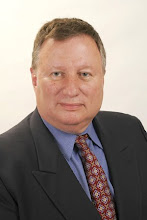"Asking someone you know for money in person is the most effective way to raise funds." Kim Klein, author of
Fundraising for Social Change, 5th Ed., leads off her chapter on "Getting Comfortable with Asking for Money" with this sentence. Right on target. Ms. Klein captures the essence of fundraising effectiveness: Knowing the person you're asking is more than half the battle in raising money for a community benefit nonprofit organization.
Board members and other volunteers will frequently tell the executive director or development director that they just can't bring themselves to "make the ask." Why? I believe it's primarily due to fear of rejection. But it's also about concern with invading another person's pocket book. When it comes right down to it, "What right do I have to ask another person to fork over some cash?"
Well, friends, this is how we successfully advance the mission of a cause that's near and dear to us. If we don't ask, we likely won't get. It takes an ask, and there's no one better to ask than a person who knows the donor prospect.
And getting into that comfort zone starts right at home: at the board of directors. We need to get members of the board thinking about investing
money to accompany the very generous contribution of
time these individuals already are giving. And the person to ask one board member to give is another board member. One who knows the person to be asked. There's a relationship there. This connection makes the ask easier. It also makes the decision to give for the first time easier.
I experienced this situation first hand when I was executive director of the American Lung Association of New Hampshire. Until we launched our first major gift campaign, few of the twelve board members donated. There was not a sense of urgency, nor a sense of importance of investment. Leaders of the board, however, were clear about the need. They decided they wanted their colleagues on the board to get some training, to "get" the concepts of urgency and investment. That if those closest to the community benefit organization didn't feel the urgency of needed funds to advance the mission (in this case, to get
No Butts About It into elementary classrooms) how would they sell others on this program's importance?
We recruited a volunteer, experienced in Republican party fundraising, to chair the Development Committee. I knew her well, as our paths crossed (even though our politics were different) in work we were doing on smoking prevention and clean air advocacy. And for the honor of leading our campaign, the chairperson made a lead gift of $5,000. That step by that friend of the Lung Association's mission made the campaign happen. And made the campaign a success.
Ken Burnett writes in
Relationship Fundraising (Jossey-Bass, 2002) that the #1 essential to effective fundraising is grasping the concept that it's about "people giving to people." When we get the message, when the focus of the nonprofit mission becomes embedded in each individual on the board, and as board members grow more comfortable with bringing in money to make the mission that they believe in happen, the dollars come.
It's clear that these are simple concepts. As they say, "it's not rocket science." But: it's hard work nonetheless. Getting board members to buy in, and getting a nucleus of board members to work at asking after they have made their gift, the snowball becomes an avalanche. But over time.
Relationship Fundraising starts with two people. And it grows from there, if we thoughtfully invest in starting to roll that snowball down the hill. Soon, it gathers momentum. And before we know it, we have effective fundraising happening because the relationships we build make it happen.
